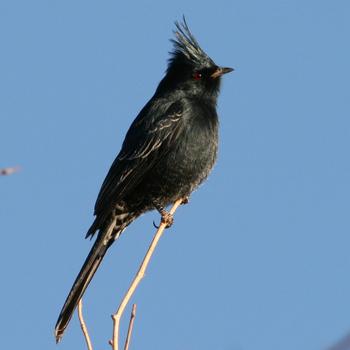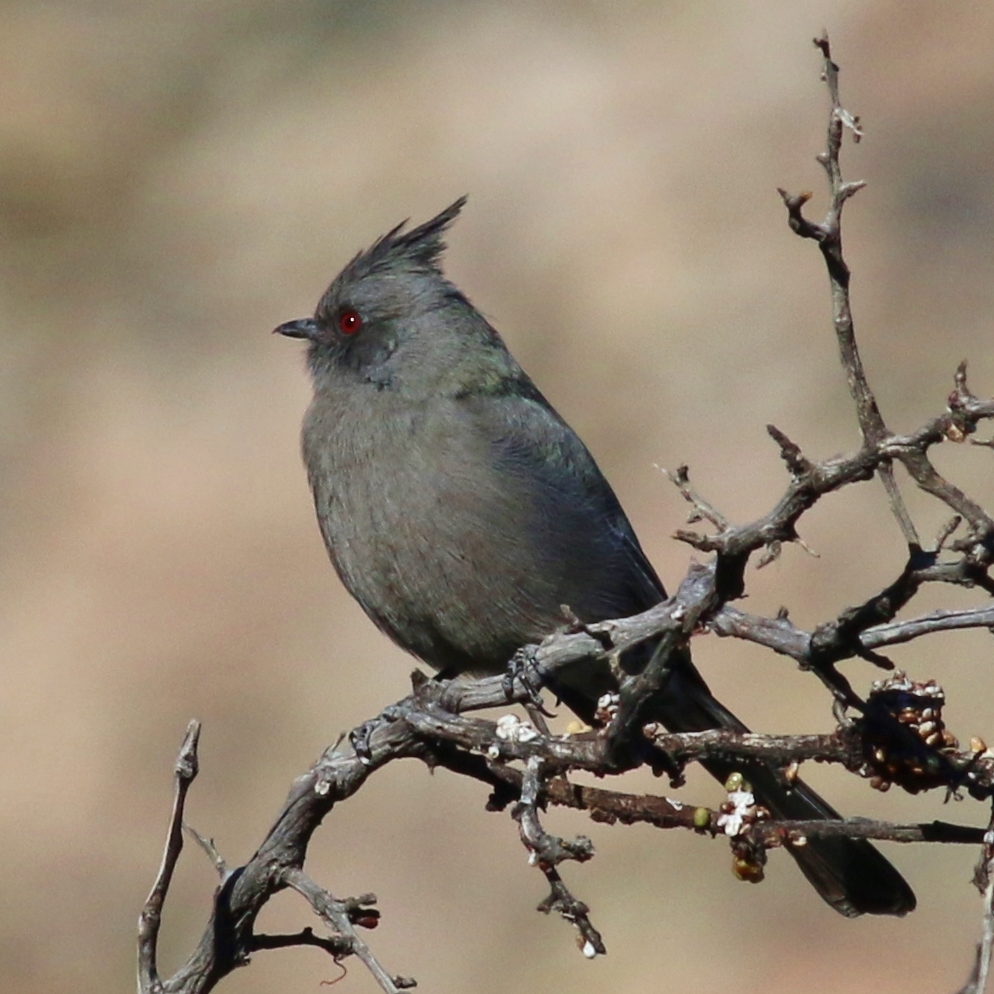Phainopepla (Phainopepla nitens)

Phainopepla, male - Mojave Desert, CA © Tom Benson

Phainopepla, female - In-ko-pah, CA © Tom Benson
The Phainopepla is a fairly common migrant and breeding bird on campus from April though June, with a few records for July to September as well. The best places to look for them on campus are the trees along Sierra Drive and in front of the Children's Center, particularly the trees that contain clumps of mistletoe. The Phainopepla is common year-round in southern California, generally spending fall and winter in the deserts and spring and summer in the foothills and coastal lowlands.High Count: 10, Average Count: 2-5The male Phainopepla is entirely glossy black with white wing patches (visible in flight), a red eye, and a prominent crest. Females are dark gray instead of glossy black, but otherwise similar to males.